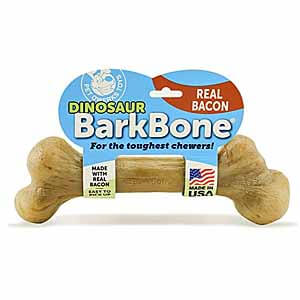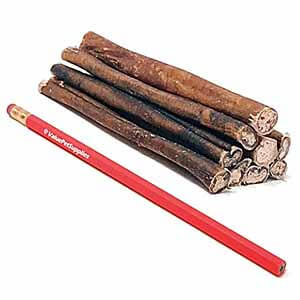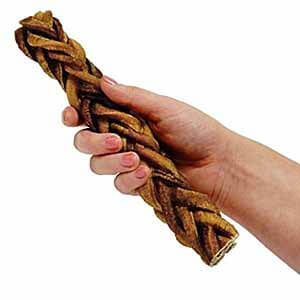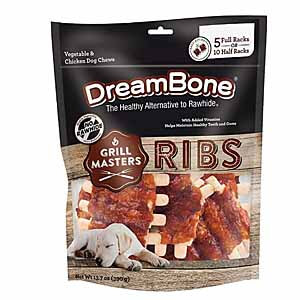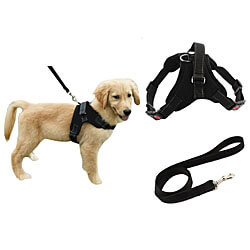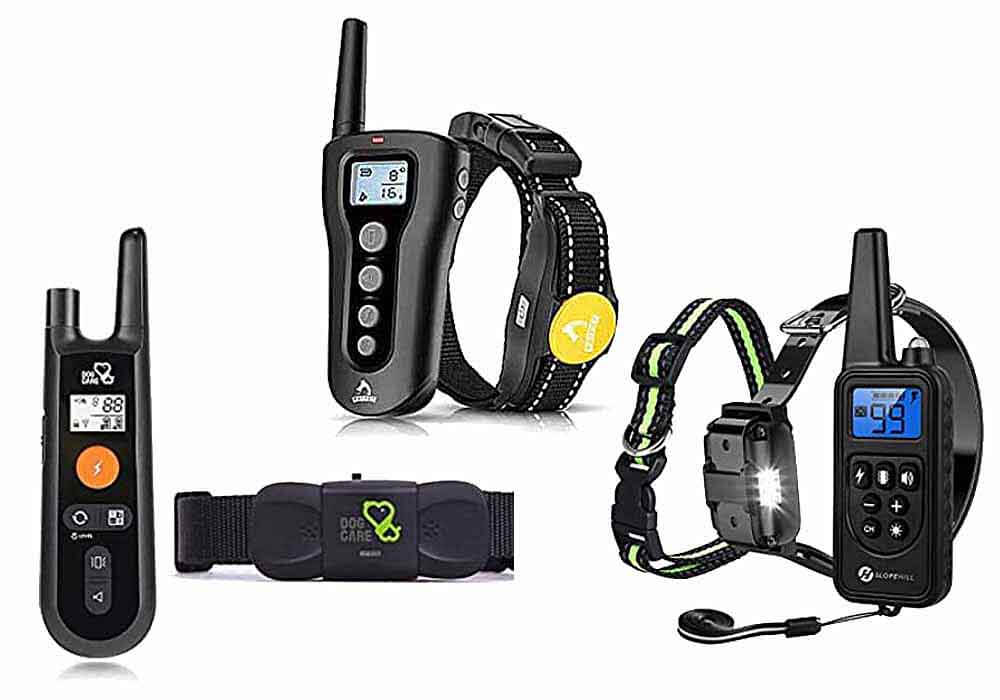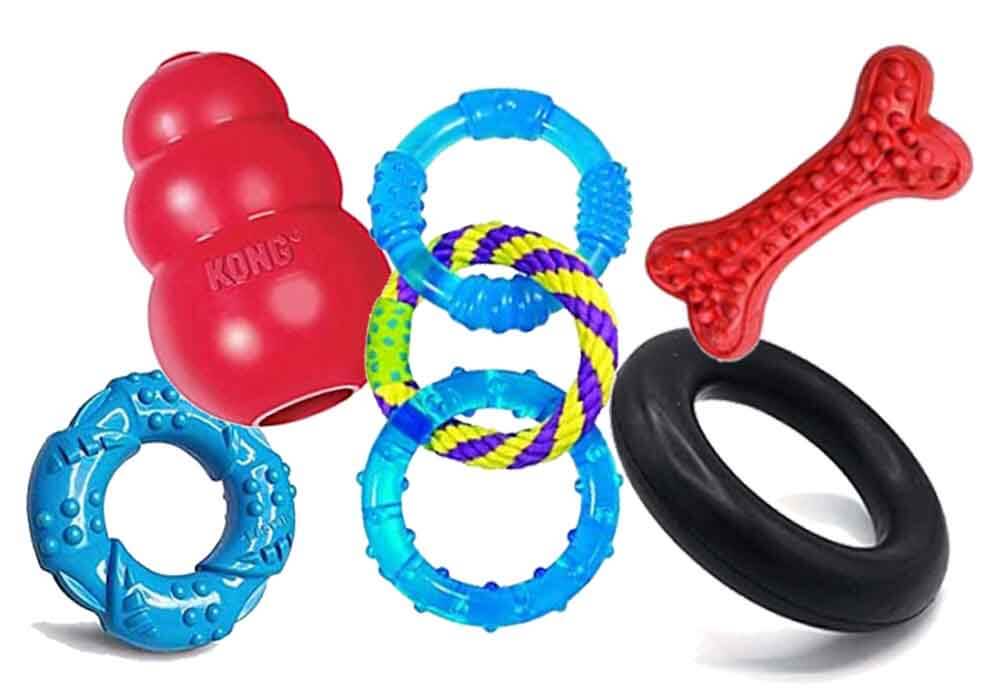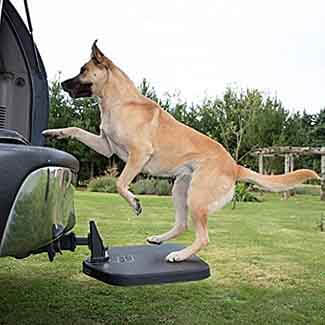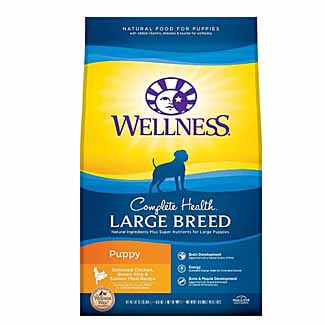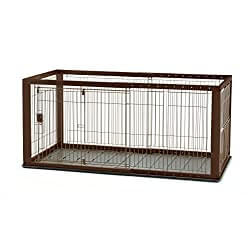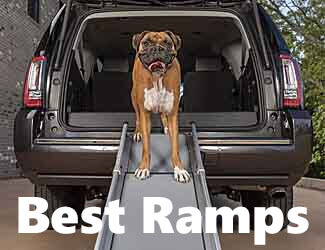5 Best Chew Bones for
Mastiffs
We've Narrowed A Crowded Field To These Top 5
by Ken Alden
Chew bones are enjoyed by all dogs, including
Mastiffs. However, as Mastiffs are larger animals, you need to make sure the
chew bones you’re buying are appropriate for your dog’s size.
Here are the Top 5 Best Chew Bones for Mastiffs:
- Petstages Chick-a-Bone Dog Chew Toy
- PetQwerks Dinosaur BarkBone Chew Toy
- ValueBull Bully Stick
- Pawstruck Monster Braided Bully Stick
- DreamBone Grill Masters Ribs
But before you decide on a bone to buy, you
need to take a few factors into account to make sure the bones you’re buying
are the right fit for your dog. For example, there are disadvantages to using
natural rawhides and hard bones such as femur bones. To learn about these
factors, as well as some other important topics regarding Mastiff chew bone
selection, read on...
Go Straight To Our Reviews Here
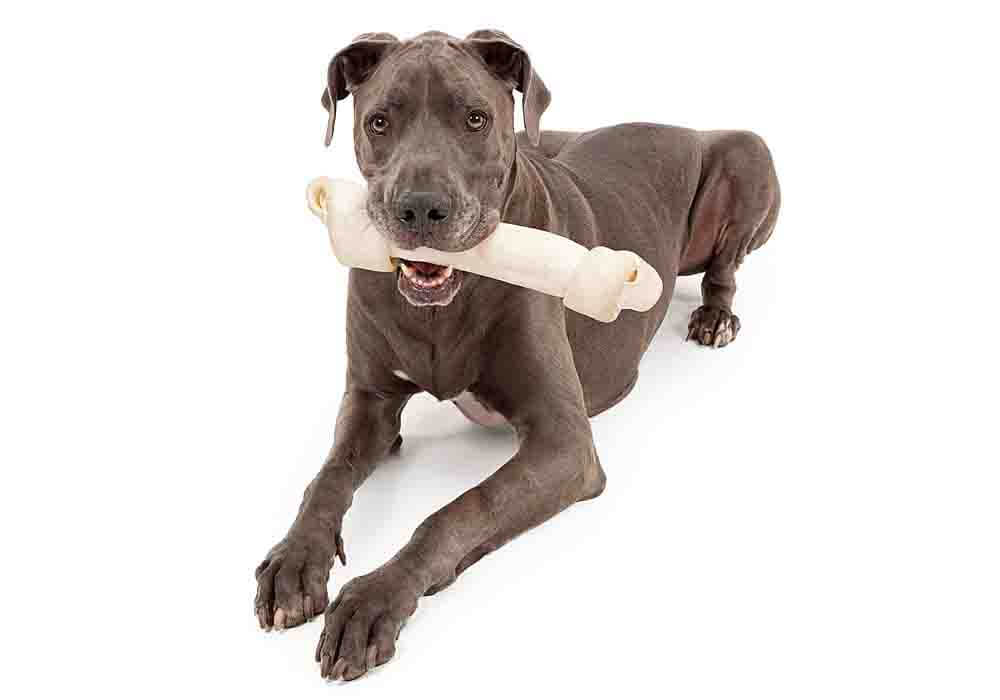
Why Do Mastiffs Chew On Bones?
Dogs evolved from wolves, and as such, some of their characteristics stem from their ancestors’ wild lifestyle. These qualities are especially apparent with larger dog breeds, which are typically more powerful and more aggressive than your average poodle.
Chewing bones provide dogs with a host of benefits from avoiding boredom to meeting their nutritional requirements. While puppies and young dogs typically exhibit chewing behavior as they start to teeth, older mature dogs also need to be given bones to chew on since chewing bones helps them maintain their teeth. Bones are also rich in calcium and other micronutrients, which are essential to the growth and development of the canine body.
Although all dog food sold these days will fulfill your Mastiff’s nutritional needs, a bone to chew on gives your Mastiff a fun way to spend their time, and it also provides adequate support to your canine’s dental health.
Bones also serve other utilities. Dogs, much
like humans, are easily bored. A bored Mastiff can easily turn a house upside
down and make your life miserable if not taken care of. And as they’re a large
and smart breed, they require frequent bouts of exercise and decent mental
stimulation as well. Chewing on bones provides this mental stimulation so that
you can keep your dog away from boredom with minimal effort.
Chewing on bones also lets your dog keep his teeth sharp and healthy. In fact, studies have found that chewing on chew bones contributed to better dental health for canines and lesser visits to the vet for the same. In fact, dogs that chew on bones tend to require lesser dental workups and plaque removal visits than others.
The fibers that are released when a dog chews on a chew bone cleans and removes dirt and other debris from your dog’s teeth, similar to how humans use a toothbrush. The stimulation from chewing on a hard bone also promotes healthy gums. Dog teeth are also naturally sharpened when they chew on a hard bone because of its abrasive and hard nature.
In addition to this, active teething dogs naturally find and chew on hard structures to clean their teeth and get rid of boredom. You wouldn’t want your mastiff to chew on your boots or those fancy coffee table legs, would you now?
So, to summarize, dogs like to chew things because:
- It keeps their teeth clean and healthy
- It provides a natural way to promote gum health
- It relieves them of their boredom
- It helps them get essential nutrients and minerals such as
calcium
Qualities That The Best Chew Bones For Mastiffs Have...
Broadly speaking, the ideal chew bone for any dog depends on the dog’s age and size.
Whatever you do, you should always get a chew bone that is larger than the dog’s muzzle so that they don’t swallow it accidentally. In the case of a Mastiff, since they’re a large breed, you should look for chew bones that are labeled large or XL while shopping.
Depending on your dog’s age, you can feed them different types of bones ranging from soft poultry-based bones to hard leg bones and even antlers if they get through bones too fast. Young teething puppies do better with softer and smaller bones and flexible chews such as chicken thighs & bully sticks, whereas large adults can be given pork and beef shoulder or leg bones.
Manufacturers also add other nutrients and minerals in their chew bones so as to provide a healthy supplement to your dog. So, when choosing a chew bone, you should also look at the levels of these nutrients in the product before making a purchase decision.
This is essential because these bones are
meant to complement an otherwise healthy diet that should be customized to your
dog’s nutritional needs. Chew bones should not be seen as stand-alone meals;
rather, they should be regarded as an after-meal treat.
Choosing A Mastiff Chew Bone
Like most things in doggy care, you need to choose a chew bone that satisfies your dog’s requirements. Your Mastiff puppy won’t be able to take much away from a bone if he can barely wrap his mouth around it. Similarly, since chew bones come in a variety of shapes, sizes, and tastes, it might take some trial and error before you ultimately find the best option for your dog.
As mentioned above, you should always buy a chew bone that is larger than your mastiff’s muzzle to prevent the accidental ingestion of the whole thing. You should also look for something that comes in the shape and texture that your dog would appreciate.
Chew bones usually won’t last for long unless they are hard bones such as those from beef or venison. You might need to refrigerate these harder bones when your dog isn’t chewing on it. If you don’t, it will likely need to be thrown away after 2-3 days to prevent the growth of harmful bacteria and fungi on the bone. You also want to make sure that your dog doesn’t go overboard with chewing.
Bones made out of inedible material such as
nylon also exist in the market. These are primarily sold as products to improve
your dog’s dental health and might come with flavorings and textures similar to
actual animal bone.
However, being inedible, accidental ingestion of such chew bones can cause trouble. Nylabone’s product disclaimer even goes as far as to say that if your dog eats large pieces of the product, they should be rushed to a vet. Such chew bones, however, are beneficial when properly used, as they aid better dental health for gnawing dogs.
As a general rule of thumb, if you’re giving your dog a chew bone, make sure it’s not too dry or cooked. Dried or cooked bones tend to be brittle. If ingested, they tend to lodge themselves in the dog’s intestines and can potentially cause perforations (tearing up of intestinal walls).
It is also suggested that bones be given after
your dog has had a meal so that they don’t chew as aggressively. Keeping the
chew time to around 15 minutes or less can also lead to a reduced
likelihood of injuries.
Risks With Chew Bones
Experienced veterinarians would advise a cautious approach to feeding your Mastiff bones. This is a double-edged sword, though, as the benefits associated with giving your dogs chew bones also come with certain risks.
Rawhide
Rawhide chew toys are generally a cheap and effective alternative to animal bones or protein for gnawing dogs. However, you’ll need to make sure that the rawhides you buy do not contain any poisonous ingredients in them, such as heavy metals or artificial colors. Rawhides are actually a by-product of the leather industry, hence watching out for common toxic substances used in a tannery is a good idea.
Hard bones
Hard bones such as femurs from cattle also tend to be quite tough to chew and should never be fed to dogs that haven’t reached maturity nor to older dogs with dental problems. Even for young adults, the feeding of such bones should be strictly monitored so as to make sure that your mastiff doesn’t accidentally ingest any fragments. Such ingested fragments can get lodged in their intestines requiring surgery to undo the damage.
Soft bones
Softer bones from poultry, for instance, like chicken wings and thighs, also present a risk in that once they dry out, they become too brittle and break into shards or splinters. A piece of sharp bone that makes its way to a dog’s digestive tract can wreak havoc, leading to cases requiring emergency surgery due to the perforation of the intestines even.
Fatty
bones such as pork ribs should also be
avoided as much as possible since dogs don’t deal with saturated fats well.
Excess fat in their diets can cause pancreatitis, which might prove to be fatal
as well.
The Best Mastiff Chew Bones You Can Buy
Keeping the above in mind, it can get pretty
confusing to choose the right product for your dog. With so many brands and
products to keep track of, getting the best for your pet is again a big hurdle.
However, we have put in the extra effort to list down the best options you can
get without wasting much time on researching them yourself.
Pet Qwerks Dinosaur BarkBone Chew Toy
from Amazon.com
Manufactured out of nylon and approved by the FDA, this chew bone is made for the most aggressive of chewers. As it consists of nylon, even if your dog manages to get small bits and splinters of the bone, it’ll pass through their stool and shouldn’t cause an issue. Parental supervision though, is suggested, as the ingestion of any non-food product is a potential risk.
The dinosaur barkbone comes in two distinct flavors, chicken and bacon, so you can choose the one your Mastiff likes better. Customers who bought the item have had success with the product, with even pit bulls not managing to bite off chunks of the chew bone. As such, you can rest assured that your Mastiff’s powerful bite won’t be able to rip off bone pieces that might be eaten.
Just make sure that if you opt for the XXL or XXXL variant of the product while buying so that your Mastiff won’t be able to put the entire thing in his mouth. While the lack of bone chipping should protect your Mastiff, that won’t matter if the bone is small enough that they can swallow it whole.
ValueBull Bully Sticks
from Amazon.com
ValueBull sells bully sticks of many different sizes, and they come in packets of up to a hundred of them. These are made from natural beef and buffalo meat and are treated to be fully digestible. As mentioned, bully sticks are classified as soft bones, so you should consider these if you have a younger Mastiff.
Bully sticks such as these are usually a good choice for growing mastiff pups when they begin to teeth and gnaw. Buying a large packet of around a 100 such bully sticks would last you for a long time as well, and you’d also get to take advantage of the volume discount.
Pawstruck Monster Braided Bully Stick
from Amazon.com
These are thicker and longer than your average bully stick and are suited for older adult mastiffs rather than puppies. It’s fully natural with no artificial flavor or coloring added, so you don’t have to worry about questionable chemicals getting into your Mastiff’s digestive system.
Pawstruck is a California based family business and claims to use only grass-fed free-range cattle for use in producing their braided bully sticks. The company has also managed to somehow manage the odor of the product. Compared to other options, the Pawstruck Monster braided bully stick rarely smells bad even after continued use as per happy customers.
In addition, this company also offers a 30-day satisfaction guarantee. If you’re not happy with the bones, you can reach out to their customer service team for a replacement. It’s unclear whether they will give full refunds, but you’ll definitely be able to choose a different type of bone from their large selection.
DreamBone Grill Masters Ribs
from Amazon.com
These BBQ flavored ribs courtesy of DreamBone are made from chicken and pork protein and come wrapped around starch-based bone structures. It’s fully edible and free of adulterants and processed rawhides.
Customers rave about how into these their dogs are, with many of them buying the product again. The DreamBone master ribs also contain nutrient and herb supplements, such as rosemary added to it as well. They promote dental health as well since dogs bite into them with more vigor because of how tasty they are.
Moreover, they look and smell very similar to actual barbeque ribs, so your mastiff companion won’t feel left out during a family get together in the backyard either. Just be sure to look over your dog when they’re chewing on it since younger pups might not be able to digest bigger chunks just as easily as older ones.
Conclusion...
Giving your dog a chew bone is, without a doubt, the easiest way to better their dental hygiene and provide valuable mental and physical stimulation in the process. Similar to how dogs come in different shapes and sizes, chew bones also come in different varieties, each with their own USP.
While there are safer as well as potentially more dangerous alternatives to natural animal bones, every one of them will require the dog owner’s supervision to a point as any experienced veterinarian will tell you.
Choosing a chew bone has everything to do with
how your dog might handle it. An educated purchase hence needs to take into
account everything from the dog’s age to how aggressive they chew normally.
Preferences in terms of the kind of tastes your dog likes also play a factor as
some dogs might not even touch bones with flavors they don’t like.
Return to the top of this Best Chew Bones For Mastiffs page

About the Author...
Ken Alden, a dedicated Mastiff owner for over eight years, is acclaimed for his expertise in care, grooming, and training. Read more About Me and my dog Shadow.
- Mastiff Guide Home ›
- Best Mastiff Products ›
- Best Chew Bones For Mastiffs
